Day 1: Arrival
15 February 2007
12:00 AM
Torres del Paine — Day 1
January 31, 2007
The day after Amanda arrived in Chile, she and I showed up at the Santiago airport for our midnight flight to Punta Arenas. I had been so consumed with a lingering preoccupation about the weight of my backpack that I was wholly unprepared for the sensation I felt at the check-in counter. Liberation. It was a marvel to travel with so little. Granted, at 48 pounds my backpack was at the upper limit of what I could comfortably carry—a typical suggestion is 25% of your body weight—but when I last flew it was to South America for 28 months and my suitcases’ combined weight was around 130 pounds. This time I had nothing extraneous. I had one of everything: one pair of pants, one pair of shorts, one t-shirt, one jacket—except for socks and underwear where I had generously allotted myself two pairs. For the first time in memory, I didn’t even have a carry-on bag. I felt completely unencumbered as I boarded the plane. Sleep was my only in-flight entertainment, and I did it until the landing in Punta Arenas awoke me.
We arrived in Punta Arenas at 3:15am. At the baggage claim we noticed several large backpacks riding on the belt alongside ours. We were in backpacker country. Within 20 minutes we met a woman from Australia, our first fellow traveler to Torres del Paine. Before we could get moving towards the park, though, we had to wait for the world to wake up. Principle I of my travel philosophy is that you don’t go on vacation to save money. All the same, there’s no point to paying for something you can get for free. A hostel costs money while the airport floor is free, so we unrolled our mattress pads and slept in a dark corner and slept until 7:00am. When we woke up we took a taxi into town and boarded a bus northbound to Puerto Natales.
Principle II of my travel philosophy is that much of the fun comes in the mishaps. Whatever doesn’t kill you or end your trip makes a good story back home. I considered us quite fortunate that by the time we were on the bus we had already accumulated two stories. First, shortly after checking my bag in Santiago I realized that I still had my Leatherman knife in my pocket. In the past I have been unsuccessful in sweet-talking security into letting me keep knives, so I asked the check-in counter attendant if he had any suggestions. He did. I could purchase an extra suitcase at the airport store, put my knife in it, pay an excess baggage fee, and check the bag. Unimpressed, I decided to store my knife at the airport. So instead of coming with me to cut things and helping me look useful on the trail, it was costing me $2 a day back home.
Second, we paid $10 to take a taxi from the airport to the bus station. We boarded the bus and shortly after departing Amanda keenly remarked that the landscape looked familiar. We were on route back to the airport, where our bus stopped to pick up all the backpackers who had gotten the message that the bus passed by the airport. Not only had those better informed travelers saved ten bucks, but they got an extra hour of sleep on the airport floor. I crossed my fingers and hoped that I wouldn’t be making amateur mistakes all week long.
The road between Punta Arenas and Puerto Natales reinforced my adventure-inspired idea of being at the end of the world. The sky was an ominous gray; it waited a mere 18 minutes into our ride before it split open for the first time and poured out its rain. Light gray, arthritic trees were scattered across a rich green carpet. In this extreme environment, the trees were defiant in their very existence, but bowed in submission to the will of the wind. Many were draped with sheets of hairy, pale green lichens called barba de viejo, or Old Man’s Beard.
In Puerto Natales we wrapped up our last errands. We rented a stove, arranged transportation to the park, and bought our perishable foods. Better to shop outside the park than inside. We paid $2 for a stick of salami at the grocery store in Puerto Natales; later in the week we saw the same one for $5. I emailed my parents saying I was checking out. Then we boarded the bus and did just that.
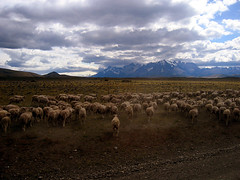
Two hours later we caught our first glimpse of the park while still 20 miles away. The scene would challenge even great poets in its description. Across small lakes and rivers, Mt. Almirante Nieto slants towards arrivers, bearing its snow like a diamond. To the west we saw the Torres (“Towers”) themselves. “Wow,” is an appropriate first reaction—it was mine—but using superlatives is redundant; they are implied in the landscape. Beautiful, amazing, breath-taking, stunning, and incredible are hollow words when compared with the sight itself. As we approached we saw the Torres rise into the sky, pierce the clouds, and disappear into them. If this were Greece, I thought, that would be Mount Olympus where the gods reside. The bus passed guanacos, a llama-like animal indigenous to the park, and hundreds of sheared sheep, on our way to Laguna Amarga—Bitter Lagoon—where we entered the park. After paying our entrance fee, we took a transfer van to Hostería Las Torres where we would begin our hike.
The two most popular routes in Torres del Paine are the Circuit, a giant ring around the entire park, and the W, so named for the shape it cuts through three parallel valleys. Given our limited timeframe, we opted for the W, which takes four to five days to complete, in comparison with the eight to ten needed for the Circuit. Our trek would cover about 44 miles across terrain of varying difficulty.
By the time we unloaded our backpacks from the van at Hostería Las Torres, our adrenaline was pumping in anticipation. It was 6:00pm. We had left my house for the airport exactly 24 hours earlier. Twelve hours ago we were sleeping on the airport floor. We were ready to take the first steps of our adventure. Our goal for the first day was to hike six miles through Valle Ascencio to Campamento Torres. That would put us within striking distance to see the supposedly spectacular sunrise at the Torres the next morning. It was a three-and-a-half hour hike. The sun didn’t set until 9:45pm, at which point there would still be enough light to setup camp. No sweat.
Strike the last sentence. I record taking my first step up the mountain at 6:18pm. Subsequently, I record the watching the first drop of sweat roll down my nose and fall to the ground at 6:48pm. It turns out that our first day’s work was not flat. I quickly learned the meaning of contour lines. These lines covered my hiking map. They overwhelmed me at first, but I quickly learned that they meant one thing: hard work. The hiking trail on the map crossed the lines so effortlessly, but on the trail in the real world, I did not cross them nearly as well. Each line on my map represented a change in elevation of 25 meters. In the first two hours of our hike, we crossed 14 of them. Do the math and you’ll find that we had climbed 1150 feet, or just slightly less than all the stairs in the Empire State Building.
Fortunately, although sweating, we were in very good spirits. We found ourselves hiking with John and Grace from Cork, Ireland, and Johannes from Austria. It was exciting to meet people from around the world on our shared journey. Plus, the scenery was a booster. The Ascencio River ran through the valley on our right-hand side, and as we climbed we saw the slopes behind us splayed out in a gigantic panorama. Before long, we made it to the two-third waypoint at Campamento Chileno. There we left John, Grace, and Johannes and pushed on towards the Torres.
At 10:20pm we arrived at Campamento Torres. We slowed down noticeably on the second part of our hike, and once we reached our goal it was a race to our beds. We pitched the tent, arranged our backpacks, and Amanda cooked whole-wheat pasta with cheese for dinner. After eating, we crawled into our sleeping bags. The plan for the next day was to see sunrise at the Torres del Paine. Our camp lie 45 minutes from the towers, sunrise would be at 5:10am, so I set my watch for 4:00am. I recounted the day in my journal and turned off my headlamp at 11:30pm. Morning would arrive soon.
Continue reading tomorrow to see how successful we are with our 4am wakeup call.
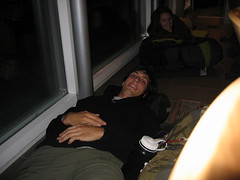
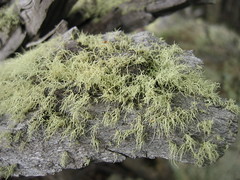
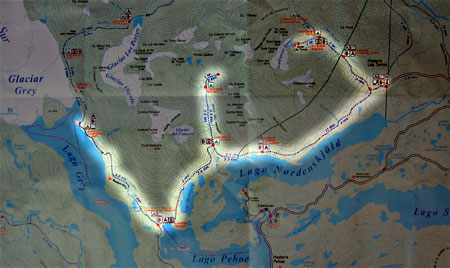
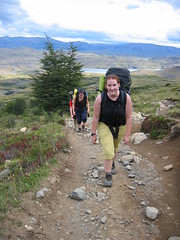
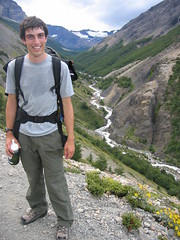

Comments